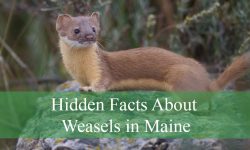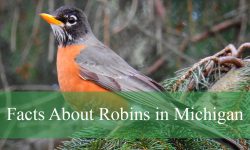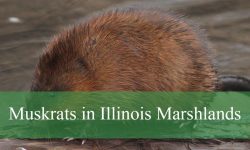Fleas are tiny, agile parasites that feed on the blood of mammals and birds, making them a common nuisance for pets and humans alike. These pests are notorious for their ability to jump long distances and their reddish-brown color.
However, there are several other insects that can be mistaken for fleas due to their size, color, or behavior. Bugs that look like fleas often share similar physical characteristics or habitats, leading to confusion. Understanding these similarities and differences is crucial for accurate identification and effective pest control.
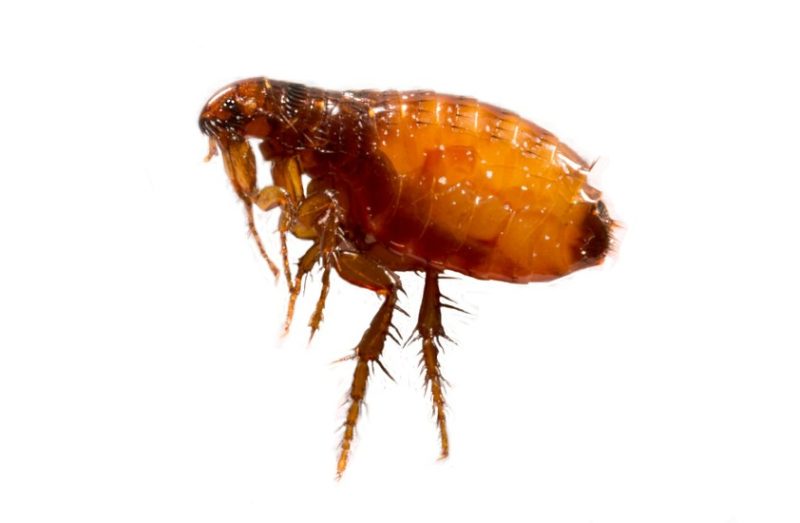
In this guide, we’ll explore various insects that resemble fleas, highlighting their distinct traits and helping you distinguish them from true fleas.
Different Types of Bugs That Look Like Fleas
Baby Cockroaches

Baby cockroaches, or cockroach nymphs, can sometimes be mistaken for fleas due to their similar shiny brown coloring. While adult cockroaches are much larger and unmistakable, nymphs are smaller and more comparable in size to fleas. However, baby American cockroach nymphs can grow up to 1.5 inches, much larger than fleas. Smaller species, like the German cockroach, have nymphs that are closer in size to fleas. Unlike fleas, cockroach nymphs may fly, making them easier to identify. The primary difference lies in their behavior: cockroach nymphs are found in kitchens seeking food, whereas fleas seek mammal hosts for blood meals.
Fruit Flies

Brown fruit flies can sometimes appear similar to fleas due to their coloring. Fruit flies, some of the smallest houseflies, grow up to 1/8 inch, making them larger than the typical 0.13-inch fleas. Distinguishing between the two is easy by observing their movement and diet. Fruit flies can fly, while fleas cannot. During summer or in warm climates, fruit flies are often found around ripe or overripe fruits, their preferred food. In contrast, fleas seek mammal hosts for blood and are not attracted to decaying food odors, making their presence in homes less related to food sources.
Gnats
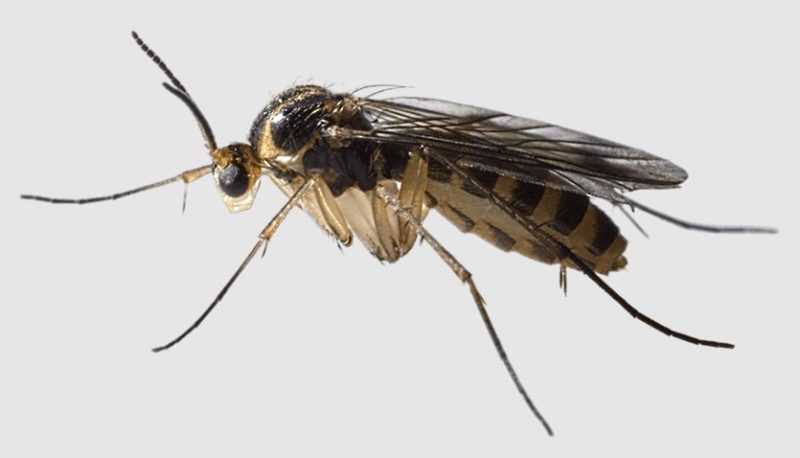
Gnats are small flies often mistaken for baby flies, with thousands of species worldwide feeding on fruit, pollen, or nectar. Biting gnats, such as Sandflies (family Psychodidae) and Biting midges (family Ceratopogonidae), are sometimes confused with fleas due to their similar brown or black coloring and biting behavior. However, fleas cannot fly, making it easier to distinguish between them. Gnats, whether biting or non-biting, have the ability to fly but cannot jump like fleas. While fleas seek mammal hosts for blood, gnats are typically drawn to fruit, plants, or decaying organic matter.
Springtails

Springtails can sometimes resemble fleas due to their brown color and small size, as tiny as 1/16 inches. Found indoors or in gardens, springtails have elongated bodies and are not harmful to humans or pets. They feed on organic materials like plants, roots, and fungi. Unlike fleas, springtails cannot fly but can jump several times their body length, making them easily mistaken for fleas. However, their preference for moist environments and presence near potted plants can help identify them. Additionally, springtails have softer, elongated bodies, whereas fleas have hard, round bodies flattened from the sides, requiring more force to crush.
Chiggers
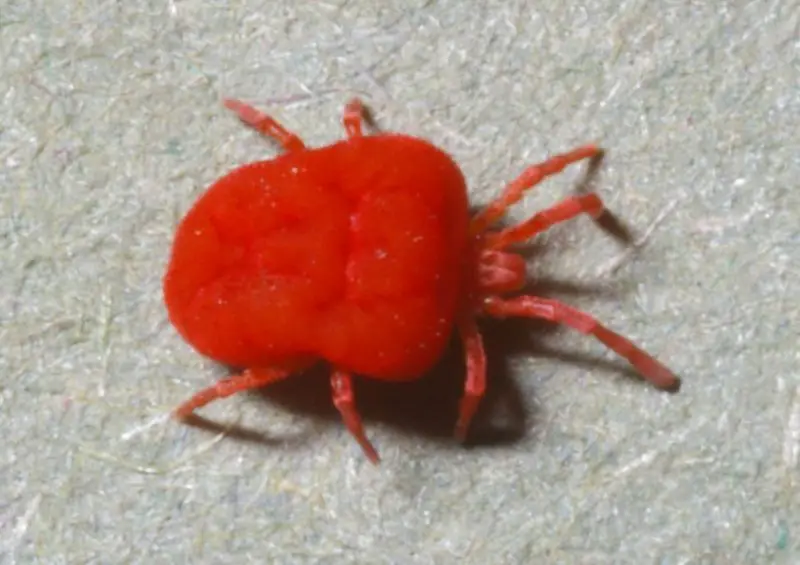
Chiggers are often mistaken for fleas in Texas, particularly the young Eutrombicula alfreddugesi arachnids. These tiny bugs live in tall grass, vegetation, and around flowers. Chiggers can jump, resembling fleas in this way. However, their bites are distinct; chiggers use sharp mouthparts to inject saliva into the skin, decomposing skin cells, unlike the blood-sucking bites of fleas. Chigger bites cause itchy, red skin, and multiple bites can occur in a small area. While chiggers rarely survive more than a few days on humans, they can last weeks on animals. Antihistamines are often used to treat the intense itching from chigger bites, typically felt about four hours after being bitten.
Booklice
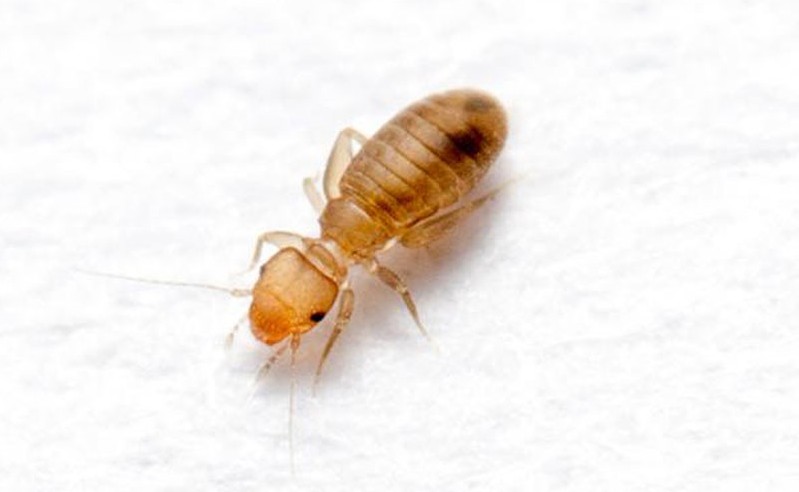
Young booklice can sometimes be confused with fleas due to their shape and color. However, their diet and behavior set them apart. Booklice feed on fungi found on objects like books and cardboard, thriving in homes with high humidity levels. Unlike fleas, booklice do not bite, jump, or fly; although adult booklice have wings, they are too small for flying. Reducing humidity by fixing water leaks and improving ventilation is crucial to eliminate booklice. Opening windows daily helps lower indoor humidity, making it unsuitable for booklice to survive. Insecticides are generally unnecessary, as booklice cannot live more than a few weeks in normal humidity conditions.
Bat Bugs
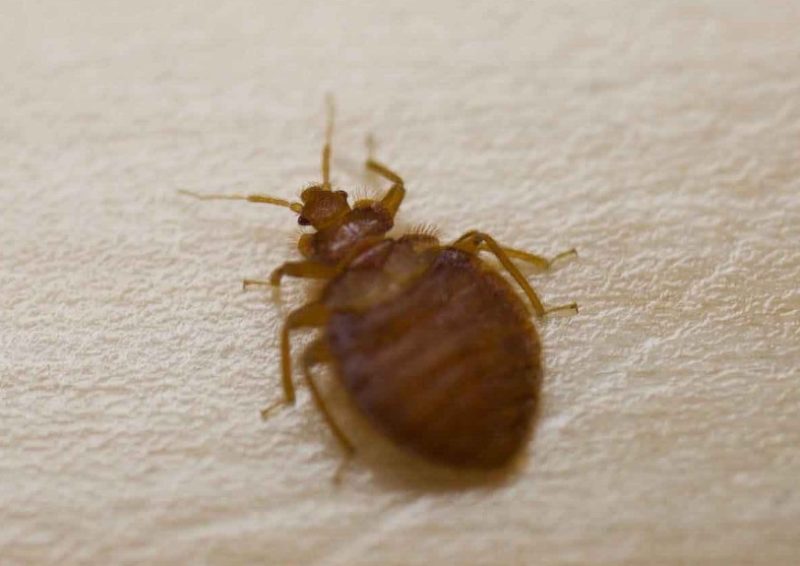
Bat bugs are blood-sucking parasites that typically live on bats. They can only invade homes when bats are present, feeding on their blood. Once bats are removed, bat bugs may start to infest homes, seeking new hosts such as humans or pets. Unlike fleas, bat bugs do not jump; they crawl in search of a blood meal. Bat bug bites are often unnoticed or only cause mild irritation, leading to red, itchy skin. Fleas, in contrast, are more active and can jump long distances to find hosts. Both pests cause bites that can lead to itching, but bat bugs are specifically linked to bats and do not infest homes without them.
Bed Bugs
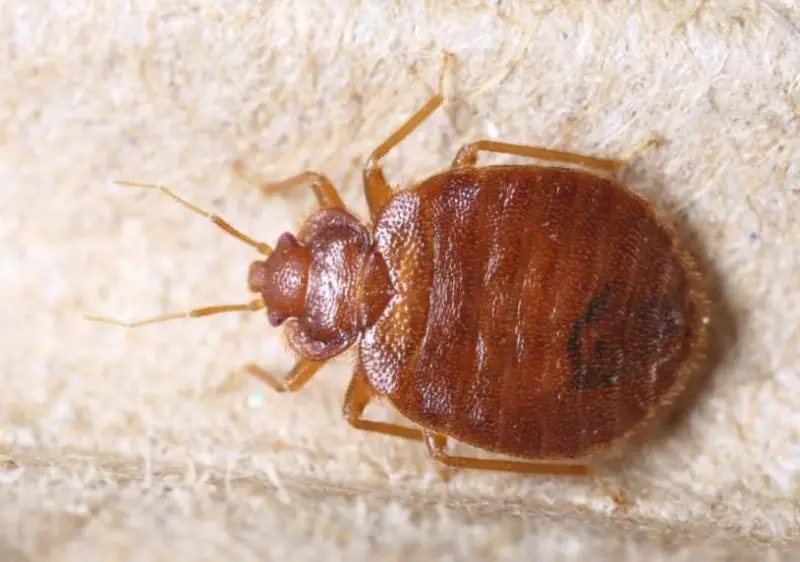
Bed bugs and fleas share similarities in size and color, both having small brown bodies. However, their behavior and habitats differ significantly. Fleas are known for their jumping ability, while bed bugs can only crawl. Fleas are often found on pets and animals, occasionally entering homes with their hosts or living on pests like rodents. Bed bugs, in contrast, reside on beds, mattresses, and furniture without needing a host. Their eggs differ too; flea eggs are white, whereas bed bug eggs are dark brown to black. Both species bite humans, causing itchy, red skin at the bite site.
Ticks
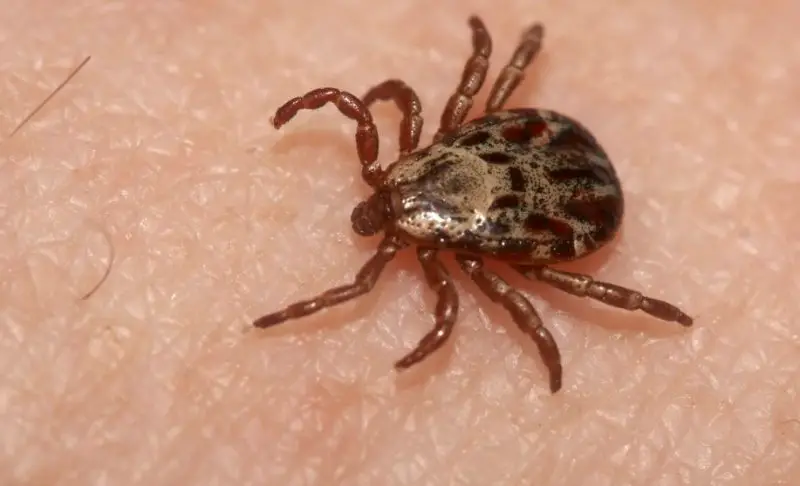
Ticks and fleas share a similar size and brown color, making them easy to confuse. Ticks, however, have eight legs and can also be black. Female ticks are larger than males, growing up to 2.5mm, while males reach 2mm. Nymphs, or young ticks, measure about 1mm. Both ticks and fleas feed on animal blood and are commonly found on pets. Brown dog ticks live on dogs and can occasionally bite humans. Unlike fleas, which can jump long distances, ticks can only crawl. Ticks can carry diseases such as Lyme disease and Rocky Mountain spotted fever, affecting both animals and humans.
Baby Crickets
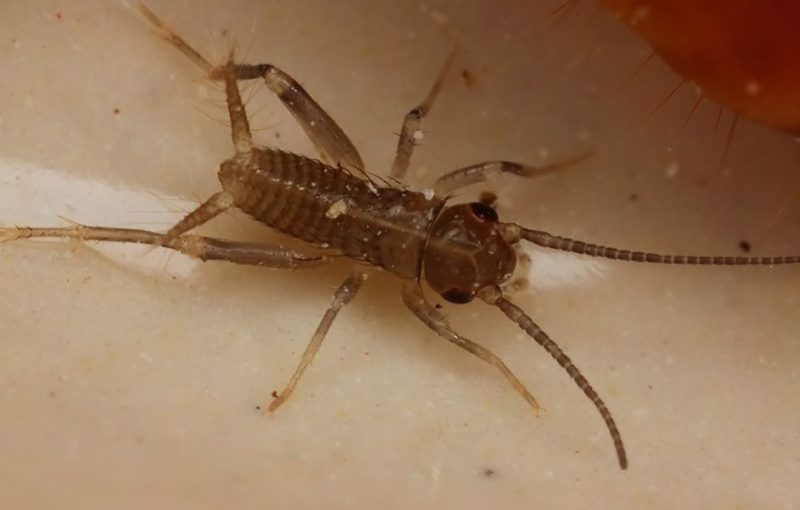
Baby crickets, or nymphs, are sometimes mistaken for fleas due to their small size and brown color. Adult crickets can grow to about ½ inch, much larger than fleas, but the nymphs are smaller and cannot fly, making them look similar to fleas. Field baby crickets are often confused with fleas because they are also mostly brown and can jump, complicating identification. Jerusalem crickets, both adult and baby, are brown and resemble fleas. However, crickets prefer outdoor habitats like prairies and tall grass, while fleas commonly enter homes with pets and pests. Unlike fleas, crickets do not typically invade indoor spaces.
Black Bean Aphids
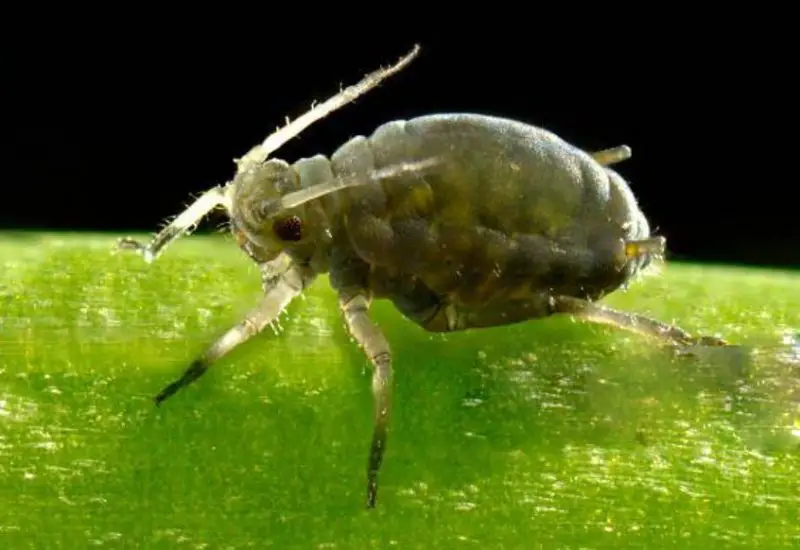
Black bean aphids are small, black pests that infest crops and vegetables, resembling fleas in their young stage. However, they have an elongated body compared to the round body of fleas and bright yellow legs, unlike the black legs of fleas. Unlike fleas, black bean aphids do not feed on blood; they suck the sap from plants and vegetables using sharp, elongated mouthparts. While they may occasionally bite humans, it’s not for feeding, and they don’t bite animals. Managing black bean aphids involves hand removal or introducing natural predators like ladybirds, unlike fleas, which require more complex treatments for control.
Carpet Beetles
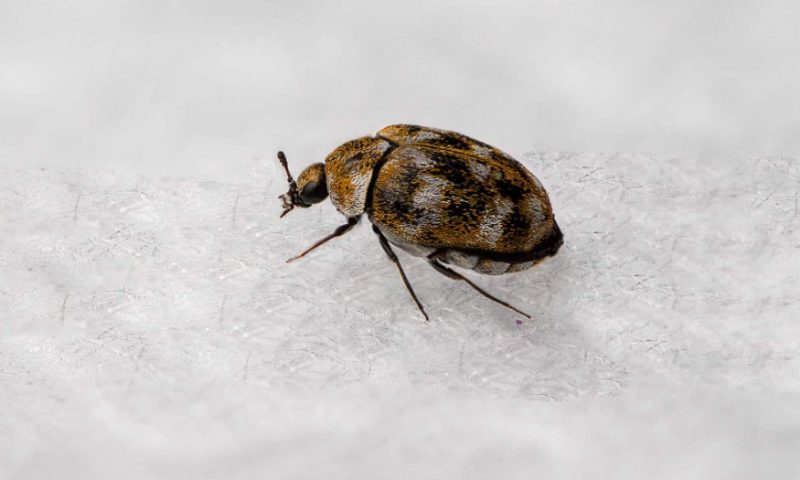
Carpet beetles, which can be as small as 1/8 inch, often resemble fleas, particularly in their darker-colored forms. However, carpet beetles are distinguishable by their patterns, which can include black, yellow, and white, unlike fleas, which are generally uniform in color. Carpet beetles feed on natural fibers like wool, silk, and leather, not on blood. They are frequently found near these materials and on beds with natural fiber sheets, but they do not bite people or pets. Unlike fleas, carpet beetles crawl instead of jumping. They do not attach to animals or humans, focusing solely on their food sources.
Flour Beetles
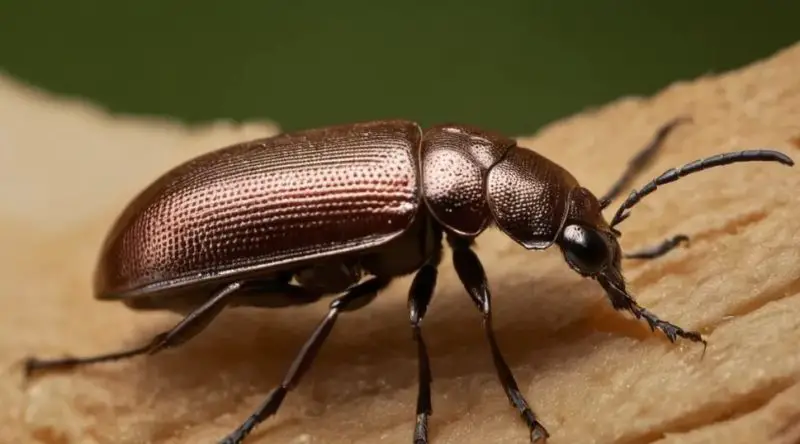
Flour beetles, often mistaken for fleas due to their small size and dark color, are actually more similar to roaches. They thrive in dry environments and feed on dry foods like flour, bread, and biscuits. Unlike fleas, flour beetles have an elongated body with a shiny brown exoskeleton and are commonly found around food sources rather than on people or pets. They are highly resilient, with heavy insecticide use often failing to eliminate them completely. Although flour beetles may appear in homes with pets, they are not parasitic and do not bite animals or humans; they are solely attracted to dry food.
Clover Mites

Clover mites are small pests often seen in homes during cold weather, unlike fleas, which are active year-round. In contrast to fleas, clover mites enter a dormant state in May and only become active again in September. They are bright red and tend to invade homes in large numbers, whereas fleas are typically brown. Clover mites have soft bodies, while fleas have harder, more resilient exoskeletons. Unlike fleas, which jump to find hosts and feed on blood, clover mites are more likely to be noticed crawling around indoor surfaces but do not bite humans or animals.
Bird Mites

Bird mites, often found on chickens and other birds, are tiny pests that grow up to 1/32 inch and can be barely visible. Unlike fleas, bird mites are primarily a concern when they bite people, typically becoming noticeable when they seek new hosts after leaving birds. Bird mites are initially translucent but turn darker after feeding, a distinct color change from the generally brown fleas. Fleas are more active, jumping between hosts and feeding on blood, while bird mites may remain unnoticed until they bite. Unlike fleas, which are found on pets and humans, bird mites are closely associated with birds and their nests.
Flea Beetles
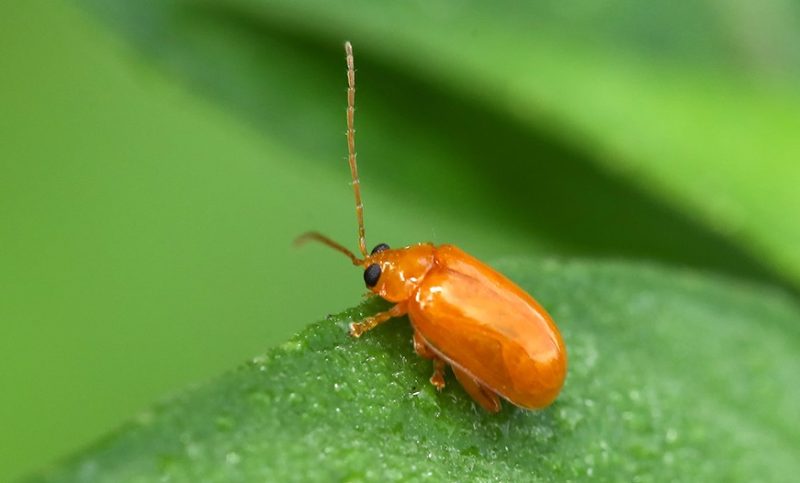
Flea beetles, named for their jumping ability, can sometimes be confused with fleas. They are black as adults and brown as nymphs, which might resemble fleas due to their color. Unlike fleas, flea beetles do not bite humans; they feed exclusively on plant foliage, such as cabbages. Their jumping capability, used for escaping predators, can make them appear similar to fleas, which are also known for their jumping behavior. However, flea beetles are not parasitic and do not seek blood meals. Insecticides are often used to manage flea beetle infestations in crops, a pest control method not needed for fleas, which target pets and humans.
Drugstore Beetles
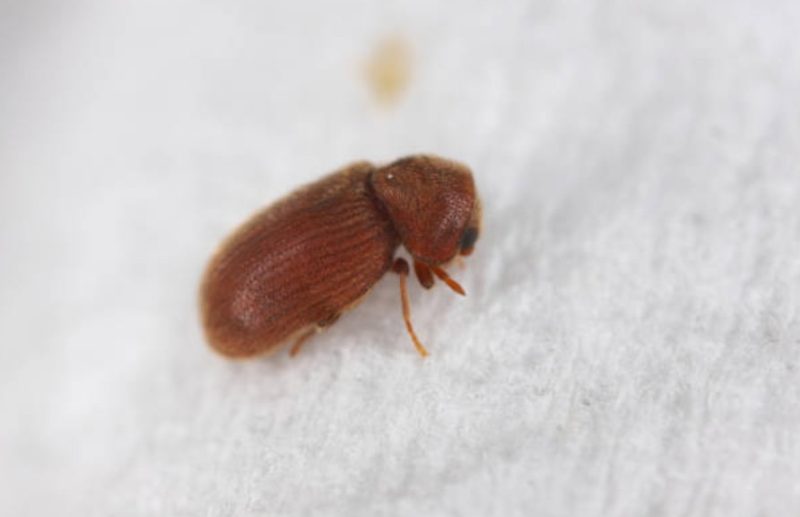
Drugstore beetles, small and uniformly brown, can resemble fleas in their size and color. Unlike fleas, which are known for their jumping ability, drugstore beetles do not jump or fly; they crawl through pantries and shelves. These beetles feed on pharmaceutical products and herbal extracts, and are also found in museums, damaging old textiles. Managing drugstore beetle infestations typically involves vacuuming and thorough cleaning, as insecticides are often ineffective. Infested items, like old clothes, might need to be sealed in plastic bags and discarded, similar to how flea infestations are managed by removing affected materials.
Bark Beetles
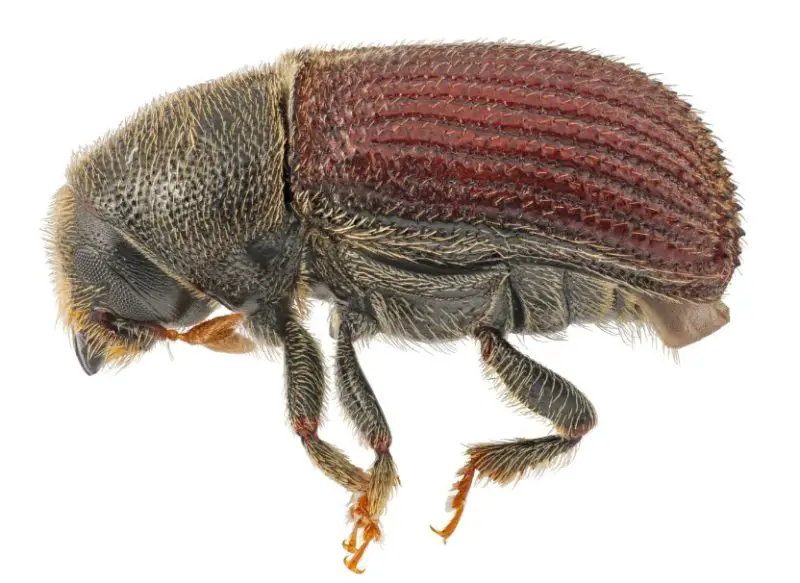
Bark beetles, typically dark-colored and up to 5mm long, are often mistaken for fleas due to their size. However, they differ significantly in behavior and habitat. Unlike fleas, which are blood-suckers, bark beetles feed on the inner part of tree bark, infesting trees such as fruit trees and ornamental trees in parks. They are common in pine forests across North America and prefer trees already suffering from diseases. Bark beetles do not bite people or animals and are primarily considered pests to trees. Fleas, on the other hand, target mammals for blood meals and are typically found on pets and humans.
Lice
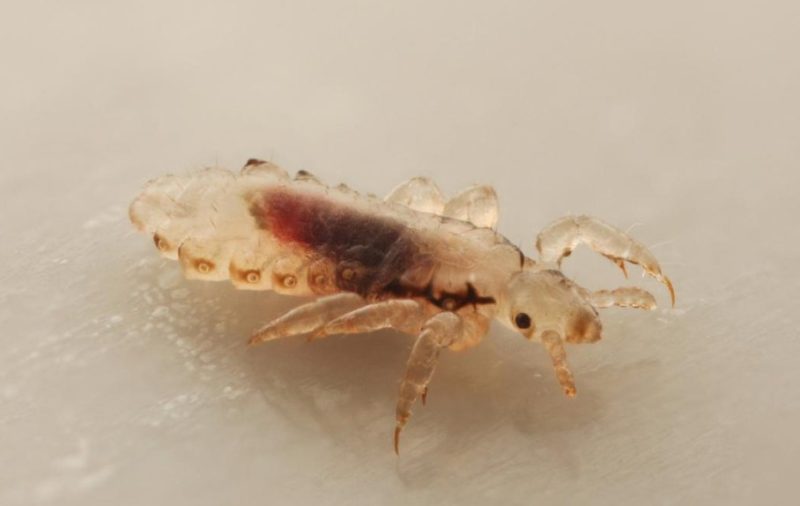
Lice, like fleas, are parasitic insects that feed on the blood of humans or animals. They move between hosts through close contact, similar to how fleas spread through pets. Head lice specifically infest the scalp, while body lice live on clothing and bedding, making contact with the skin only when feeding. Pubic lice are found around the pubic area and do not migrate to other body parts. Unlike fleas, which can jump long distances and affect various mammals, lice do not jump; they crawl. Both lice and fleas cause itching and discomfort, but lice are more specialized in their specific areas of infestation and modes of transmission.


